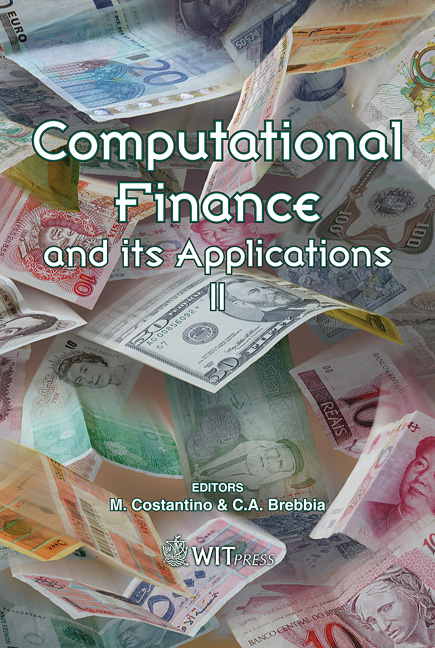A Valuation Model Of Credit-rating Linked Coupon Bond Based On A Structural Model
Price
Free (open access)
Transaction
Volume
43
Pages
10
Published
2006
Size
504 kb
Paper DOI
10.2495/CF060241
Copyright
WIT Press
Author(s)
K. Yahagi & K. Miyazaki
Abstract
A credit-linked coupon bond pays a coupon associated with its credit rating at the time of the coupon payment date, rather than an amount equal to the initially fixed coupon. The only existing corporate bond valuation model for creditrating- triggered products was formulated by Jarrow et al. However, this model does not incorporate the fact that increases in the coupon payment resulting from downgrades may cause a further deterioration of credit ratings and of the likelihood that the company will be able to make future coupon payments. In this paper, we present a credit-linked coupon bond valuation model that considers this issue. Using a structural approach, we extend the classical model of Merton by introducing a threshold value corresponding to each credit rating, and a volatility of the company value process that depends on its credit rating. Given these extensions, our model is more flexible than the JLT model, and we are clearly able to capture the above effect via numerical simulations. Furthermore, from the perspective of practical implications, the JLT model tends to value credit-linked coupon bonds more cheaply than does our model when the initial credit rating is high, while the reverse is true for a low initial credit rating. Keywords: risk management, derivative pricing, credit risk. 1 Introduction The formulation and use of corporate bond valuation models dates from the work of Merton [5]. In the Merton model, the default of a bond is defined as a state in which the corporate value falls below the face amount of the bond, and in which the corporate value process follows a geometric Brownian motion. As a result of these assumptions, the Merton model may easily be used in conjunction with the Black-Scholes formula to value corporate bonds. Using valuation frameworks of this kind is typically characterised as following a \“structural approach,” and
Keywords
risk management, derivative pricing, credit risk.





